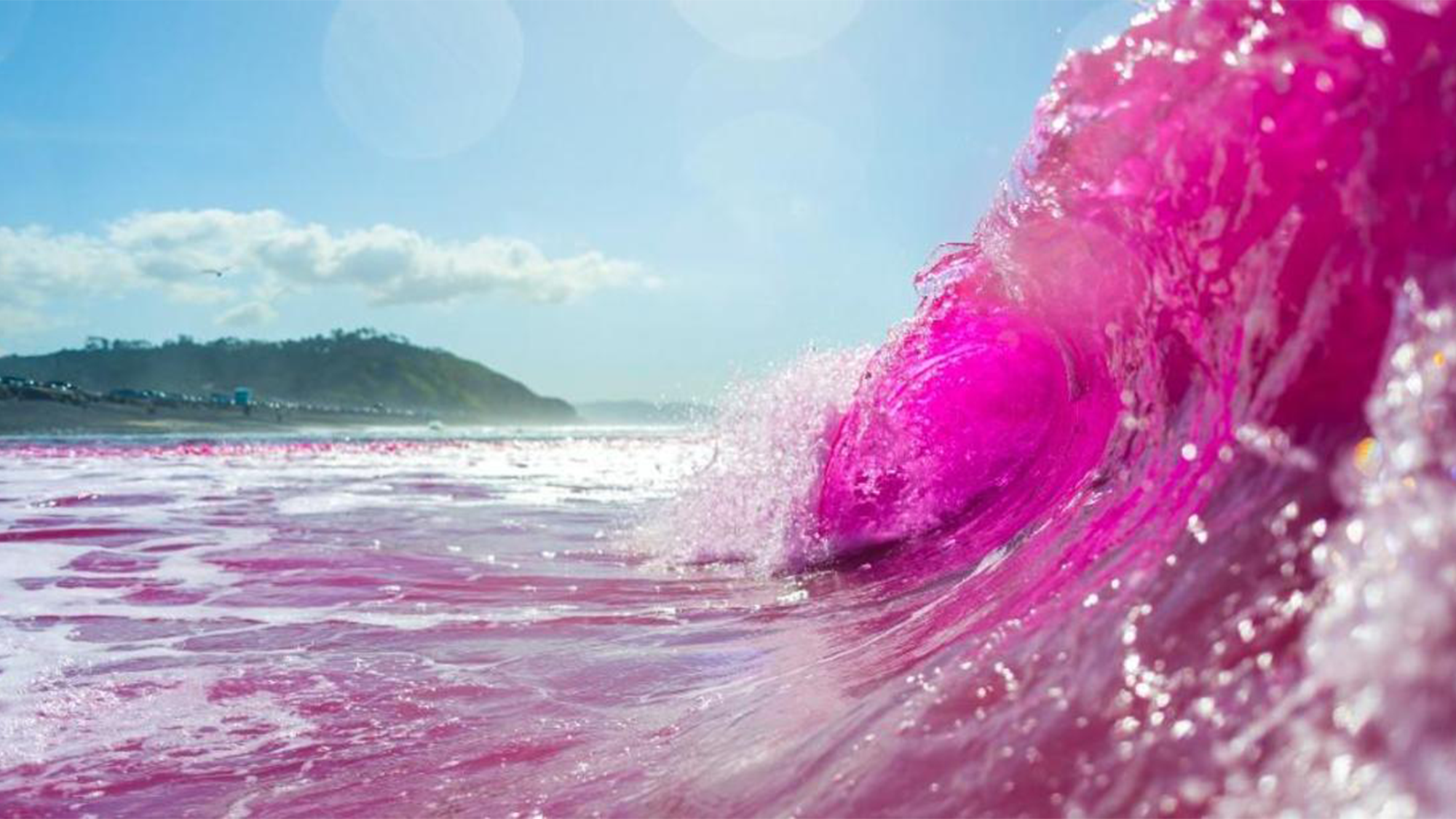

The water off the coast of San Diego, California has been looking a bit like something out of a Lisa Frank illustration. Don’t worry, it is all in the name of science.
Researchers from the University of California, San Diego’s Scripps Institution of Oceanography and the University of Washington are working on an experiment aptly titled PiNC, or Plumes in Nearshore Conditions, that is using pink dye to investigate how small freshwater outflows interact with the surfzone.
[Related: Humans are altering Earth’s tides, and not just through climate change.]
The first of three planned dye releases began on January 20 and the remaining releases are planned for late January and early February.
The project is focused on the estuary and surrounding coastline at Los Peñasquitos Lagoon. Three streams (Carroll Creek, Carmel Creek and Los Peñasquitos Creek) feed into the lagoon, which feeds into the Pacific Ocean. Estuaries and rivers play an important part in delivering freshwater in addition to sediments and contaminants to the coastal ocean.
By releasing an environmentally safe pink dye into the mouth of the estuary, the PiNC research team is able to track what happens when small-scale plumes of more buoyant freshwater meet the denser, more salty, and often colder environment and breaking waves (or surfzone).
“I’m excited because this research hasn’t been done before and it’s a really unique experiment,” said Scripps coastal oceanographer Sarah Giddings, who is leading the PiNC study, in a statement. “We’re bringing together a lot of different people with different expertise, such that I think it’s going to have some really great results and impacts. We will combine results from this experiment with an older field study and computer models that will allow us to make progress on understanding how these plumes spread.”
Drones, a jet ski equipped with a fluorometer (which measures the fluorescence or light emitted from the dye), and sensors are tracking the movement of the fluorescent pink dye. Several moorings and sensors are beyond the breaking waves and along the seafloor to measure the ocean’s currents and conditions (water temperature, tide, salinity, etc.).
[Related: Some rivers suddenly change course, and we may finally know why.]
The team says that the PiNC experiment will provide a first-ever view of the buoyant plume and wave mixing dynamics that are at play and aim to improve understanding of how ocean waves interact with small-to-moderate outflows of freshwater. The data from this study can then help quantify the spread of sediment, pollutants, larvae, and other important material.

This specific site was chosen because it is a “prime example” of what happens when a small river plume discharges material into the surfzone along a relatively uniform stretch of coastline
“Los Peñasquitos Lagoon is a very dynamic system, with different elements changing each day, often even over the course of one day,” said Alex Simpson, a Scripps postdoctoral scholar and member of the research team, in a statement. “I am looking forward to seeing how the balance of physical forces—ocean waves competing against river outflow—determine the fate of the estuary water as it enters the coastal ocean on the days that we conduct our field experiment.”
The dye releases occur at a point in the tide cycle when the water level is falling called an ebb tide. This ensures that the dye is carried out of the estuary and into the coastal ocean. The pink dye can be seen by the naked eye for several hours after the deployment. While the dye doesn’t pose a threat to the environment, beachgoers are advised to swim in areas further south or north of the estuary on the days that the dye is released due to the active research.
